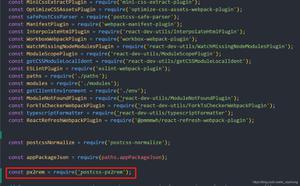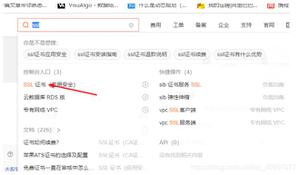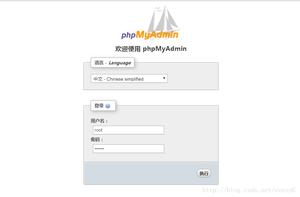SpringBatch多数据源配置

spring: batch:
job:
enabled: false #是否自动执行定义的Job,默认是
initialize-schema: never
datasource:
name: payReportBatch
type: com.alibaba.druid.pool.DruidDataSource
driver-class-name: com.mysql.jdbc.Driver
jdbc-url: jdbc:xx
username: root
password: X18
initial-size: 10 # 初始化大小
min-idle: 10 # 最小数量
max-active: 10 # 最大数量
# 连接等待超时时间
max-wait: 10000
# 配置检测可以关闭的空闲连接间隔时间
time-between-eviction-runs-millis: 60000
# 配置连接在池中的最小生存时间
min-evictable-idle-time-millis: 300000
validation-query: select "1"
test-while-idle: true
test-on-borrow: false
test-on-return: false
# 打开PSCache,并且指定每个连接上PSCache的大小
pool-prepared-statements: true
max-open-prepared-statements: 50
max-pool-prepared-statement-per-connection-size: 50
filter:
stat:
merge-sql: true
# 慢日志查询
log-slow-sql: true
# 慢SQL记录超过5秒的sql在druid控制台标红
slow-sql-millis: 5000
wall:
enabled: false
commons-log:
enabled: false
log4j:
connection-log-enabled: false
slf4j:
statement-log-enabled: false
log4j2:
statement-log-enabled: false
# 配置监控统计拦截的filters,去掉后监控界面sql无法统计,"wall"用于防火墙 如果项目用的logback则删掉log4j
filters: stat,wall
# 配置Druid Spring监控切面
# aop-patterns: com.xy.pay.monitor.service.*,com.xy.pay.monitor.schedule.*,com.xy.pay.monitor.controller.*
# 配置DruidStatFilter
web-stat-filter:
url-pattern: "/*"
exclusions: "*.js,*.gif,*.jpg,*.bmp,*.png,*.css,*.ico,/druid/*,/uploal/*"
# 配置DruidStatViewServlet
stat-view-servlet:
url-pattern: "/druid/*"
# IP白名单(没有配置或者为空,则允许所有访问)
# allow: 127.0.0.1,192.168.163.1
# IP黑名单 (存在共同时,deny优先于allow)
# deny: 192.168.1.73
# 禁用HTML页面上的“Reset All”功能 true是不禁用
reset-enable: true
login-username: admin
login-password: kj
use-global-data-source-stat: false
clear-filters-enable: true
pay:
datasource:
name: payTrade
driver-class-name: com.mysql.jdbc.Driver
type: com.alibaba.druid.pool.DruidDataSource
jdbc-url: jdbc:xx
username: root
password: t2018
initial-size: 10 # 初始化大小
min-idle: 10 # 最小数量
max-active: 10 # 最大数量
# 连接等待超时时间
max-wait: 10000
# 配置检测可以关闭的空闲连接间隔时间
time-between-eviction-runs-millis: 60000
# 配置连接在池中的最小生存时间
min-evictable-idle-time-millis: 300000
validation-query: select "1"
test-while-idle: true
test-on-borrow: false
test-on-return: false
# 打开PSCache,并且指定每个连接上PSCache的大小
pool-prepared-statements: true
max-open-prepared-statements: 50
max-pool-prepared-statement-per-connection-size: 50
filter:
stat:
merge-sql: true
# 慢日志查询
log-slow-sql: true
# 慢SQL记录超过5秒的sql在druid控制台标红
slow-sql-millis: 5000
wall:
enabled: false
commons-log:
enabled: false
log4j:
connection-log-enabled: false
slf4j:
statement-log-enabled: false
log4j2:
statement-log-enabled: false
# 配置监控统计拦截的filters,去掉后监控界面sql无法统计,"wall"用于防火墙 如果项目用的logback则删掉log4j
filters: stat,wall
# 配置Druid Spring监控切面
# aop-patterns: com.xy.pay.monitor.service.*,com.xy.pay.monitor.schedule.*,com.xy.pay.monitor.controller.*
# 配置DruidStatFilter
web-stat-filter:
url-pattern: "/*"
exclusions: "*.js,*.gif,*.jpg,*.bmp,*.png,*.css,*.ico,/druid/*,/uploal/*"
# 配置DruidStatViewServlet
stat-view-servlet:
url-pattern: "/druid/*"
# IP白名单(没有配置或者为空,则允许所有访问)
# allow: 127.0.0.1,192.168.163.1
# IP黑名单 (存在共同时,deny优先于allow)
# deny: 192.168.1.73
# 禁用HTML页面上的“Reset All”功能 true是不禁用
reset-enable: true
login-username: admin
login-password: xsj
use-global-data-source-stat: false
clear-filters-enable: true
BatchDataSourceConfigurer
package com.xy.pay.report.batch.config;
import org.apache.ibatis.session.ExecutorType;
import org.apache.ibatis.session.SqlSessionFactory;
import org.mybatis.spring.SqlSessionFactoryBean;
import org.mybatis.spring.SqlSessionTemplate;
import org.mybatis.spring.annotation.MapperScan;
import org.springframework.beans.factory.annotation.Qualifier;
import org.springframework.beans.factory.annotation.Value;
import org.springframework.boot.context.properties.ConfigurationProperties;
import org.springframework.boot.jdbc.DataSourceBuilder;
import org.springframework.context.annotation.Bean;
import org.springframework.context.annotation.Configuration;
import org.springframework.context.annotation.Primary;
import org.springframework.core.io.Resource;
import org.springframework.core.io.support.PathMatchingResourcePatternResolver;
import org.springframework.jdbc.datasource.DataSourceTransactionManager;
import org.springframework.transaction.annotation.EnableTransactionManagement;
import javax.sql.DataSource;
/**
* spring batch 数组源配置
*
* @author Canaan
* @date 2020/2/27 18:38
*/
@Configuration
@MapperScan(basePackages = "com.xy.pay.dao.batch", sqlSessionTemplateRef = "sqlSessionTemplate")
@EnableTransactionManagement(proxyTargetClass = true)
public class BatchDataSourceConfigurer {
@Value("classpath:config/mybatis-config.xml")
private Resource configLocation;
@Bean
@Primary
@ConfigurationProperties(prefix = "spring.datasource")
public DataSource dataSource() {
return DataSourceBuilder.create().build();
}
@Bean
@Primary
public SqlSessionFactory sqlSessionFactory(@Qualifier("dataSource") DataSource dataSource) throws Exception {
SqlSessionFactoryBean bean = new SqlSessionFactoryBean();
bean.setDataSource(dataSource);
bean.setConfigLocation(configLocation);
bean.setMapperLocations(new PathMatchingResourcePatternResolver().getResources("classpath:com/xy/pay/dao/batch/mapper/**/*.xml"));
return bean.getObject();
}
@Bean
@Primary
public DataSourceTransactionManager transactionManager(@Qualifier("dataSource") DataSource dataSource) {
return new DataSourceTransactionManager(dataSource);
}
@Bean
@Primary
public SqlSessionTemplate sqlSessionTemplate(@Qualifier("sqlSessionFactory") SqlSessionFactory sqlSessionFactory) throws Exception {
return new SqlSessionTemplate(sqlSessionFactory, ExecutorType.BATCH);
}
}
RDSDataSourceConfigurer
package com.xy.pay.report.batch.config;
import org.apache.ibatis.session.ExecutorType;
import org.apache.ibatis.session.SqlSessionFactory;
import org.mybatis.spring.SqlSessionFactoryBean;
import org.mybatis.spring.SqlSessionTemplate;
import org.mybatis.spring.annotation.MapperScan;
import org.springframework.beans.factory.annotation.Qualifier;
import org.springframework.beans.factory.annotation.Value;
import org.springframework.boot.context.properties.ConfigurationProperties;
import org.springframework.boot.jdbc.DataSourceBuilder;
import org.springframework.context.annotation.Bean;
import org.springframework.context.annotation.Configuration;
import org.springframework.core.io.Resource;
import org.springframework.core.io.support.PathMatchingResourcePatternResolver;
import org.springframework.jdbc.datasource.DataSourceTransactionManager;
import org.springframework.transaction.annotation.EnableTransactionManagement;
import javax.sql.DataSource;
@Configuration
@MapperScan(basePackages = "com.xy.pay.dao.core", sqlSessionTemplateRef = "rdsSqlSessionTemplate")
@EnableTransactionManagement(proxyTargetClass = true)
public class RDSDataSourceConfigurer {
@Value("classpath:config/mybatis-config.xml")
private Resource configLocation;
@Bean
@Qualifier("rds")
@ConfigurationProperties(prefix = "pay.datasource")
public DataSource rdsDataSource() {
return DataSourceBuilder.create().build();
}
@Bean
@Qualifier("rds")
public SqlSessionFactory rdsSqlSessionFactory(@Qualifier("rdsDataSource") DataSource dataSource) throws Exception {
SqlSessionFactoryBean bean = new SqlSessionFactoryBean();
bean.setDataSource(dataSource);
bean.setConfigLocation(configLocation);
bean.setMapperLocations(new PathMatchingResourcePatternResolver().getResources("classpath:com/xy/pay/dao/core/mapper/**/*.xml"));
return bean.getObject();
}
@Bean
@Qualifier("rds")
public DataSourceTransactionManager rdsTransactionManager(@Qualifier("rdsDataSource") DataSource dataSource) {
return new DataSourceTransactionManager(dataSource);
}
@Bean
@Qualifier("rds")
public SqlSessionTemplate rdsSqlSessionTemplate(@Qualifier("rdsSqlSessionFactory") SqlSessionFactory sqlSessionFactory) throws Exception {
return new SqlSessionTemplate(sqlSessionFactory, ExecutorType.BATCH);
}
}
SpringBatchConfigurer
package com.xy.pay.report.batch.config;import org.springframework.batch.core.configuration.ListableJobLocator;
import org.springframework.batch.core.configuration.annotation.EnableBatchProcessing;
import org.springframework.batch.core.explore.JobExplorer;
import org.springframework.batch.core.launch.JobLauncher;
import org.springframework.batch.core.launch.JobOperator;
import org.springframework.batch.core.launch.support.SimpleJobLauncher;
import org.springframework.batch.core.launch.support.SimpleJobOperator;
import org.springframework.batch.core.repository.JobRepository;
import org.springframework.beans.factory.annotation.Autowired;
import org.springframework.beans.factory.annotation.Qualifier;
import org.springframework.context.annotation.Bean;
import org.springframework.context.annotation.Configuration;
import org.springframework.context.annotation.ImportResource;
import org.springframework.core.task.TaskExecutor;
@Configuration
@EnableBatchProcessing
@ImportResource("classpath:batch/spring-batch.xml")
public class SpringBatchConfigurer {
@Autowired
private ListableJobLocator jobRegistry;
@Autowired
private JobLauncher jobLauncher;
@Autowired
private JobRepository jobRepository;
@Autowired
private JobExplorer jobExplorer;
@Autowired
private TaskExecutor batchExecutor;
@Bean
public JobOperator jobOperator() {
SimpleJobOperator jobOperator = new SimpleJobOperator();
jobOperator.setJobExplorer(this.jobExplorer);
jobOperator.setJobRepository(this.jobRepository);
jobOperator.setJobLauncher(this.jobLauncher);
jobOperator.setJobRegistry(this.jobRegistry);
return jobOperator;
}
/**
* 异步批处理执行者
*
* @author Canaan
* @date 2020/2/20 9:08
*/
@Bean
@Qualifier("async")
public JobLauncher asyncJobLauncher() throws Exception {
SimpleJobLauncher jobLauncher = new SimpleJobLauncher();
jobLauncher.setJobRepository(this.jobRepository);
jobLauncher.setTaskExecutor(batchExecutor);
jobLauncher.afterPropertiesSet();
return jobLauncher;
}
//@Override
//protected JobRepository createJobRepository() throws Exception {
// JobRepositoryFactoryBean factory = new JobRepositoryFactoryBean();
// factory.setDataSource(dataSource);
// factory.setTransactionManager(getTransactionManager());
// factory.setIsolationLevelForCreate("ISOLATION_SERIALIZABLE"); //ISOLATION_REPEATABLE_READ
// factory.setTablePrefix("BATCH_");
// factory.setMaxVarCharLength(1000);
// factory.afterPropertiesSet();
// return factory.getObject();
//}
//
//@Override
//protected JobExplorer createJobExplorer() throws Exception {
// JobExplorerFactoryBean jobExplorerFactoryBean = new JobExplorerFactoryBean();
// jobExplorerFactoryBean.setDataSource(this.dataSource);
// jobExplorerFactoryBean.setTablePrefix("BATCH_");
// jobExplorerFactoryBean.afterPropertiesSet();
// return jobExplorerFactoryBean.getObject();
//}
}
以上是 SpringBatch多数据源配置 的全部内容, 来源链接: utcz.com/z/514196.html








